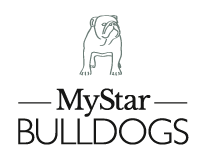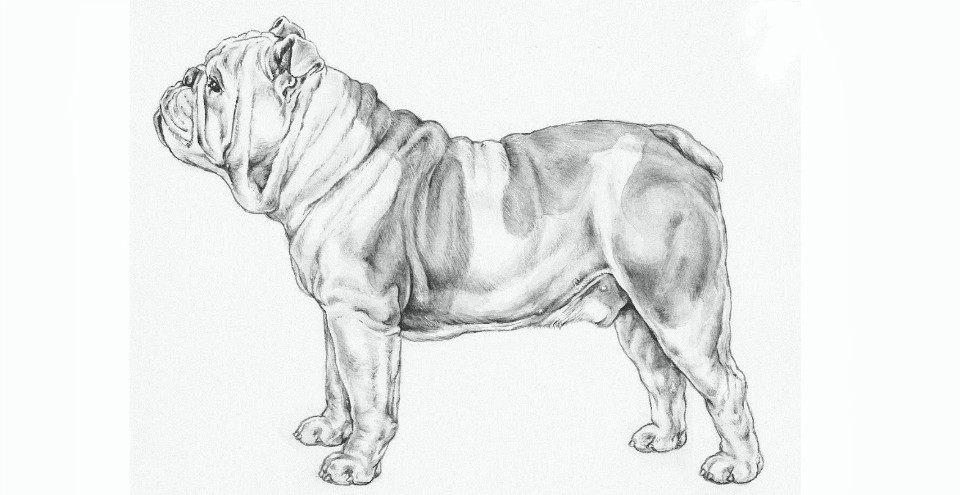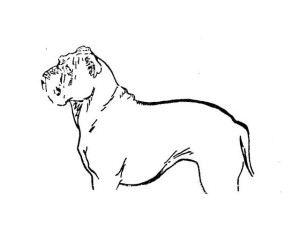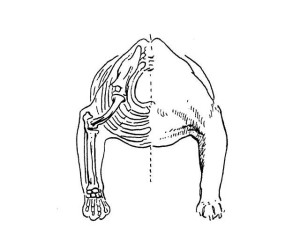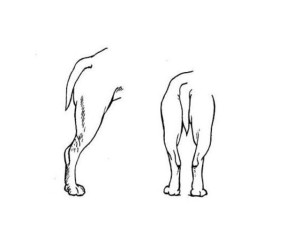The English Bulldog: standard and brief notes on the breed evolution
The breed standard is the morphological and behavioral characteristics description that an “ideal” dog of a given breed should embody. This should be a guide to breeders to determine the distinctive traits to be preferred in the breed selection.
Jacob Lamphier proposed the first version of the ideal English bulldog appearances, in 1861, his observations were based on King Dick (a standard male). By confronting with other breed experts, he described the peculiarities of the English bulldog. Vero Shaw reported this overall bulldog description, in 19 bullet points, in “The illustrated book of the dog”.
Three years later, in 1864, Samuel Wickens edited the first official Bulldog standard under the pseudonym of Philo Kuon (dog lover).
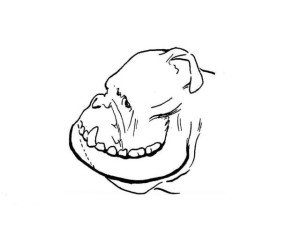
The English bulldog standard developed by Wickens, was considered a perfect picture of the bulldog. After approval by the Bulldog Club, was officially published in February 1865 with the title “The properties of a good bulldog“, replacing the version previously written by J. Lamphier.
The ideal established by Wickens remained unchanged until 1875, when took place a first English bulldog standard amendment. A new and more detailed description became the new standard acknowledged by the English Bulldog Club, who published it in the newspaper “The country” on May 27th, 1875, with the intent to make it as recognized as possible.
Almost 35 years later, in 1909, the official standard of the Bulldog Club Incorporated was again slightly revised. The general contents did not change, however some explanations changed to help a clearer understanding. But the real innovation was the introduction of the term “corkscrews” to describe the bulldog admitted tale types, unknown in the 1875’ standard version.
The standard remained unchanged for almost the entire XXth century, until 1986, when the Kennel Club made a crucial review, describing a more modern English Bulldog.
The F.C.I. (International Cynological Federation) at the meeting held in Jerusalem on June 23rd and 24th, 1987, ratified the standard revision, publishing it on October 19th, 1988. That was an attempt to reduce the selection of hyper-typical dogs.
The ’88 version was then revised in 2003, when the Kennel Club made a new version, promptly adopted by the FCI on March 24th, 2004. The version was published for all the FCI countries and was applied starting on April 16th of the same year.
FCI, in order to preserve the bulldog from some health issues, added three important reasons for “disqualification” (i) aggressive or overly shy dogs, (ii) dogs that shows difficulty breathing and (iii) ingrown tails.
In August 2008, the popular BBC television network broadcasted the Cruft, the most famous and important dog show in the world. It broadcasted also special reports on the health and genetic issues that affect some dog breeds, provoking a general reaction of the public opinion. That resulted in a drafted list of 12 breeds, including the bulldog, considered at risk in England. Hence, the Kennel Club was invited to appropriately modify its standards.
On September 3rd 2009, the Kennel Club addressed a letter to the various English clubs to effectively modify their standard. After several changes the Bulldog Breed Council, formalized a new standard revision, currently in force. Its validity were firstly recognized by Great Britain since October 1st 2009, and from January 10th 2011, by all FCI Member States.
FCI Standard No. 149 English Bulldog
